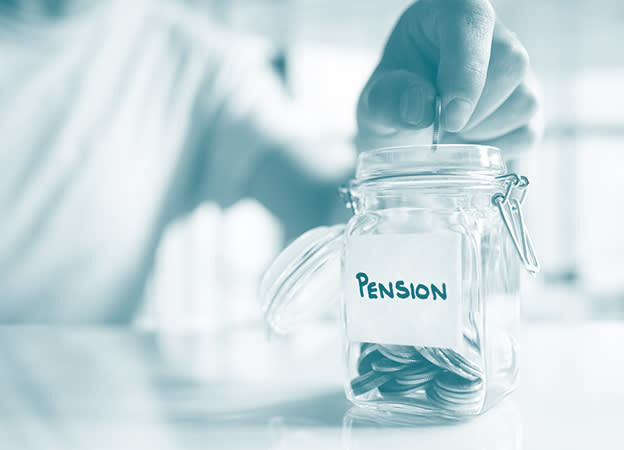
- Our reader wants to boost her income by taking out 4 per cent a year
- However, her investments are spread across three accounts and a myriad of stocks and funds
- There is no diversification and lots of big bets on high-risk industries
Reader Portfolio
Juliet
68
Description
Personal pension, Isas, general investment account, buy-to-let
Objectives
Rebalance portfolio so it’s easier to manage and set up to pay 4 per cent income per year
Portfolio type
Investing for income
An era of lower interest rates once seemed to mean two things: that highly-rated growth stocks could simply keep generating huge capital gains, and that portfolio income was hard to come by without taking significant risks. Both these truisms are turned on their heads – with major implications for investors.
Such is life for Juliet, who has been investing to simply grow her savings for around eight years, and now aged 68, wants to start withdrawing income from her slightly scattered portfolio.
Juliet, retired and recently divorced, is financially sound, but wants to use her £29,500 pension to top up her existing income. “I receive £11,900 from the state pension and another £18,900 from letting out a buy-to-let in London,” she says. “I want to supplement this with another £1,200 from my pension – a withdrawal rate of 4 per cent. And to do this, I want to grow the pot by 5 per cent a year.”
The problem comes down to how Juliet’s investments are organised. Alongside the pension is a much larger individual savings account (Isa), with around £74,000 spread across 11 funds, exchange traded funds (ETFs) and investment trusts. She also holds another £6,600 in direct shares while her pension, which she wants to use to draw an income, is spread across one ETF, an active fund and Alphabet (US:GOOGL).
“I need to rebalance my portfolio and have a better split of growth and value funds, as well as a better geographical mix to make sure I can achieve 5 per cent,” she says.
A rebalance is also needed following a painful period for Juliet’s portfolio, which suffered a huge drawdown in 2022 given its stock-heavy and tech-heavy allocations. “My portfolio has decreased considerably in the past two years and I can ill afford to lose any more so my attitude to risk is reasonably cautious,” she adds.
Juliet has taken some action to change this, selling out hard-hit areas such as UK and global smaller companies by ditching SDL UK Buffettology (GB00BF0LDZ31) and Vanguard Global Small-Cap Index (IE00BPT2BD14) and recycling this into income stocks via City of London IT (CTY) and the Vanguard FTSE All-World High Dividend Yield ETF (NHYL).
“For my next move I’m considering selling Scottish Mortgage IT (SMT) and buying £10,000 in Scottish American Investment Company (SAIN) or F&C Investment Trust (FCIT),” she adds.
Aside from rebalancing her portfolio, Juliet is on solid ground. Her £500,000 buy-to-let, which is securely let via a local authority, and her £750,000 residence are both mortgage-free, while she has a year’s worth of income in cash. Now she just wants an easier portfolio to manage, aligned with what she needs. “I used to follow the market closely, and acted sometimes impulsively,” she says. “But since my divorce, I trade less frequently and monitor the market less.”
NONE OF THE COMMENTARY BELOW SHOULD BE REGARDED AS ADVICE. IT IS GENERAL INFORMATION BASED ON A SNAPSHOT OF THESE INVESTORS’ CIRCUMSTANCES
Ben Yearsley, investment director at Shore Financial Planning, says:
Given the tax implications of using your pension instead of your Isa, discussed below, I’m going to take your investment pot and discuss in its entirety rather than splitting the discussion by tax wrapper. Thinking holistically, given the amount you have, makes more sense and is a simpler approach.
You have a total investment pot of around £110,000 and a further £30,000 in cash. Firstly, on the cash, you must make sure that is working for you too – you can get more than 4 per cent from easy-access savings accounts and closer to 6 per cent with one-year bonds.
To the portfolio. It’s a bit random and feels far higher risk than someone who’s keen to only make 5 per cent a year. A near-10 per cent weight in Google owner Alphabet, Scottish Mortgage and a variety of individual shares all raise alarm and, to be honest, I can’t quite work out how you have arrived at wanting a 5 per cent a year with the portfolio you currently have – they are worlds apart.
I would split your £110,000 between 10-15 holdings, with a mix of bonds – currently yielding more than 5 per cent – some core long-term stock market funds, and shares. I’d split the portfolio about 50-50 between bonds and equities.
Of your current holdings; I would keep the Vanguard FTSE All All World High Dividend ETF but increase the size to £10,000. I’d also leave Stewart Investors Asia Pacific Leaders Sustainability, as there is great growth potential from that. Finally, I’d keep the BlackRock World Mining Trust, as it has a good yield and interesting growth prospects. That takes up around £25,000.
On the bond side first, I would add the following funds, all at £11,000 a time: Ninety One Global Total Return Credit (GB00BK80VF35), Axa Global Strategic Bond (GB00BMZCH587), Premier Miton Corporate Bond Monthly Income (GB0003895496), Close Select Fixed Income (GB00BD6R7Y87), and Jupiter Strategic Bond (GB00BN8T5596).
With the remainder, add Personal Assets Trust (PNL), Heriot Global (GB00B99M6Y59) and First Sentier Responsible Listed Infrastructure (GB00BMXP3956) at £10,000 each.
Overall, there is a mix of growth (Personal Aassets and First Sentier) and value (Vanguard and BlackRock) in the equities portion and on the bond side a broad spread of types of funds and all with decent yields of more than 4 per cent and some up to 8 per cent.
Laith Khalaf, head of investment analysis, at AJ Bell, says:
Your investment portfolio is quite high risk and almost entirely in stocks. Even within that, some bets are in quite volatile areas such as life sciences, technology and mining. There’s nothing wrong with this approach, but it is a bit at odds with your risk tolerance.
It also makes generating an income harder because some of these areas are growth plays rather than companies that pay dividends. Generating an income from the portfolio will require selling shares, which opens up questions about timing and cash management. You have a lot of income from your buy-to-let and state pension, so this may be a secondary consideration for your investment portfolio, but still worth chewing over.
Holding individual stocks, especially small companies, also requires assiduous monitoring, and it sounds like you might be wanting to dial down your oversight of the portfolio, as you say you are not looking to trade too much. You should look through the individual stocks and decide whether the reason you bought them still holds. There are some holdings which don’t seem worth the hassle. For example, £100, or 0.1 per cent, of your £110,000 investment portfolio is in Shell. That stock could do well or badly and it wouldn’t impact your portfolio. But it’s still an extra mouth for you to feed in terms of keeping abreast of developments.
I would put this money into funds and trusts and reduce the amount of oversight required. There are plenty of funds and trusts that focus on delivering income, if this is something you’re looking for your investment portfolio to provide. To maintain a global outlook, I recommend Evenlode Global Income Fund (GB00BF1QNC48) and
Schroder Global Equity Income (GB00BDD2CM95). For a more domestic focus, try BlackRock UK Income (GB00B67DWR44).
You have a reasonable geographical spread because of your global trackers. You’re probably a bit heavy on Asia, but by no means outside common sense bounds. But this is a volatile area, so if you want to reduce risk, dial down exposure.
You should add some bonds into the mix. These tend to move in the opposite direction to stocks, which leads to an overall smoother journey for your portfolio. For a long time, bonds offered diddly squat in terms of income, and came with a whole load of valuation risk, but rising interest rates have changed all that. You can buy bond funds, or invest in multi-asset funds. The latter buys both shares and bonds (and sometimes other assets), with a fund manager looking after asset allocation.
For bonds, I would use iShares Core Global Aggregate Bond ETF (AGBP), which is also part of the IC’s Top 50 ETFs, as this maintains a low-cost, low-maintenance approach. If you want an active fund, try Artemis Strategic Bond (GB00B2PLJS27).
On the multi-asset side, Personal Assets Trust is good at kicking off income while maintaining the value of your savings and the Rathbone Multi-Asset Strategic Growth Portfolio (GB00B86QF242) is good at growing capital using a multitude of assets.






